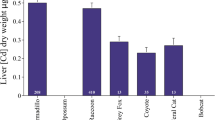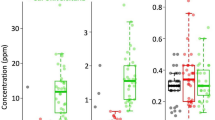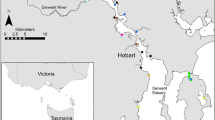Abstract
The feasibility of using the Barn Owl (Tyto alba guttata) to monitor environmental quality in the Netherlands was investigated, using Cd, Cu, Pb, Mn, and Fe as indicators for environmental contamination.
Throughout 1992, bird-watchers, volunteers, and officials submitted 53 birds. The age and geographical distribution of these birds formed a representative sample of the population. The following interrelationships were investigated: cause of death, nutrient reserve, age, time of death, place of death, body measurements, sex, condition, and heavy metal concentration in kidney, liver, and tibia.
Twenty-eight animals had died after collisions. Fifteen Barn Owls died of exhaustion. In total, twenty-four birds were exhausted, with coccidiosis or other parasitic gastrointestinal infections. The condition of the birds showed that as the birds' condition worsened, fat reserves were depleted before protein reserves. Significant linear relationships were found between decreasing protein reserves and decreasing dry weights of the liver, kidney, flight muscle and heart, but not of the tibia. An asymptotic, nonlinear relation was observed between dry organ weight and fat reserve. This suggested that fat reserves were only found when protein reserves exceeded 15% of the body mass at starvation. Concentrations of Cu and Fe in liver and kidney rose as protein reserves fell; the total content of Cu and Fe per organ, however, remained constant. The Mn concentration of these organs remained constant; Mn content increased with increasing organ sizes. Neither Cd nor Pb showed a clear relationship with parameters of body condition. The ratio between the organ content of Pb or Cd and the dry organ weight, however, revealed some birds from contaminated habitats.
The findings suggested that concentrations of environmental contaminants should be measured on a dry weight basis. Furthermore, depending on the pharmacokinetic characteristics of a contaminant, the total content of that contaminant per organ can be more informative than the concentration. In this one year sample of Barn Owls, no indications were found of toxic levels of Cd, Cu, Pb, Mn, or Fe in the Netherlands.
It is concluded that the Barn Owl is a suitable biomonitor. Furthermore, a network of volunteers can produce an informative sample of the Barn Owl population without interfering with the population.
Similar content being viewed by others
References
Aaseth J, Norseth T (1986) Copper In: Friberg L, Nordberg GF, Vouk V (eds) Handbook on the toxicology of metals, II, 2nd edition. Elsevier, Amsterdam, pp 233–254
Adrian WJ, Stevens ML (1979) Wet versus dry weight for heavy metal toxicity determinations in duck liver. J Wildlife Diseases 15:125–126
Anonymous (1990) In volle vlucht. Het ringwerk in Nederland; analyse en beleid. [Bird banding in the Netherlands: Analysis and policy.] Royal Dutch Academy of Sciences, Heteren/Amsterdam, pp 31
Baars AJ, Over H eds (1989) Wild bird mortality in the Netherlands, 1975–1989. DLO-Central Veterinary Institute, Lelystad and Netherlands Society for Protection of Birds, Zeist
Blomqvist S, Frank A, Petersson LR (1987) Metals in liver and kidney tissues of autumn-migrating dunlin Calidris alphina and curlew sandpiper Calidris ferruginea staging at the Baltic Sea. Marine Ecology Progress Series 35:1–13
Braaksma S, de Bruijn O (1976) De kerkuilstand in Nederland. [New data on Barn Owls Tyto alba in the Netherlands.] (with English summary) Limosa 49:135–187
Bunn DS, Warburton AB, Wilson RDS (1982) The Barn Owl. T and AD Poyser, Calton
Canters KJ, de Snoo GR (1993) Chemical threat to birds and mammals in the Netherlands. Review Environ Contam Toxicol 130:1–29
Cheney MA, Hacker CS, Schroder GD (1981) Bioaccumulation of lead and cadmium in the Louisiana Heron (Hydranassa tricolor) and the Cattle Egret (Bubulcus ibis). Ecotoxicol Environ Safety 5:211–224
Clausen B, Elvestad K, Karlog O (1982) Lead burden in Mute Swans from Denmark. Nordic Veterinary Medicine 34:83–91
Connors PG, Anderli VC, Risebrough RW, Gilbertson M, Hays H (1975) Investigations of heavy metals in Common Tern populations. Canadian Field-Naturalist 89:157–162
Cook JA, Marconi EA, Di Lunzio NR (1974) Lead, cadmium, endotoxin interaction: Effect on mortality and hepatic function. Toxicol Applied Pharmacol 28:292–302
Cosson RP (1989) Relationships between heavy metal and metallothionein-like protein levels in the liver and kidney of two birds: The Greater Flamingo and the Little Egret. Comparative Biochem Physiol 94C:243–248
Custer TW, Franson JC, Pattee OH (1984) Tissue lead distribution and hematological effects in American Kestrels (Falco sparverius L.) fed biologically incorporated lead. J Wildlife Diseases 20:39–43
de Bruijn O (1979) Voedseloecologie van de Kerkuil Tyto alba in Nederland. [Food ecology of the Barn Owl in the Netherlands.] (with English summary) Limosa 52:91–154
de Jong J (1980) De Kerkuil in Friesland. [Barn Owl in the province of Friesland.] (with English summary) Limosa 53:142–144
de Jong J (1983) De Kerkuil. [The Barn Owl] Kosmos, Utrecht
de Jong J (1989) Aantal broedparen Kerkuil neemt toe. [Number of breeding pairs of the Barn Owl is increasing.] Vogels 52(9):182–183
de Jong J (1991a) Protection et recherches sur la consommation alimentaire et le bilan énergétique chez la Chouette Effraie, Tyto alba. [Protection and study of diet and energy balance of the Barn Owl] In: Juillard M, Bassin P, Baudvin H, Génot JC, Ravussin PA, Rebetez C (eds) Rapaces nocturnes; Actes du 30e Colloque interrégional d'ornithologie Porrentruy (Suisse), novembre 1990. Nos Oiseaux: Société romande pour l'étude et al protection des oiseaux, Prangins, pp 109–122
de Jong J (1991b) Aantal broedparen van de Kerkuil boven de duizend. [More than one thousand breeding pairs of the Barn Owl] Bull. Society for the Protection of Birds (Nieuwsbrief Kerkuil 1991) 4(3):3
de Jong J (1992) Bull. Society for the Protection of Birds (Nieuwsbrief Kerkuil 1992) 5(2):3–12
de Voogt P, van Hattum B, Feenstra JF, Copius Peereboom JW (1980) Exposure and health effects of Cadmium. Toxicol Environ Reviews 3:89–109
DeMent SH, Chisolm JJ, Barber JC, Strandberg JD (1986) Lead exposure in an “urban” Peregrine Falcon and its avian prey. J Wildlife Diseases 22:238–244
Denneman WD (1990) A comparison of the diet of two Sorex araneus populations under different heavy metal stress. Acta Theriologica 35:25–38
Denneman WD, Hoven M (1992) Ecosystem transfer of Cadmium and effects of the central food chain of Insectivora. In: Teller A, Mathy P, Jeffers JNR Responses of forest ecosystems to environmental changes. Elsevier, NY, pp 612–615
Denneman WD, Douben PET (1993) Trace metals in primary feathers of the Barn Owl (Tyto alba guttatus) in the Netherlands. Environ Pollut 82:301–310
Diem K (1982) Wissenschaftliche Tabellen Geigy Teilband Statistik, 8. Auflage, Basel.
Di Giulio RT, Scanlon PF (1984) Heavy metals in tissues of waterfowl from the Chesapeake Bay, USA. Environmental Pollution Series A 35:29–48
Dijkstra C, Daan S, Meijer T, Cavé AJ, Foppen RPB (1988) Daily and seasonal variations in body mass of the Kestrel in relation to food availability and reproduction. In Dijkstra C: Reproductive tactics in the Kestrel Falco tinnunculus, and study in evolutionary biology (PhD thesis, University of Groningen). Van Denderen B.V., Groningen pp 15–39
Elinder CG (1986) Iron In: Friberg L, Nordberg GF, Vouk V (eds) Handbook on the toxicology of metals, II, 2nd edition. Elsevier, Amsterdam, pp 276–297
Elvestad K, Karlog O, Clausen B (1982) Heavy metals (copper, cadmium, lead, mercury) in Mute Swans from Denmark. Nordic Veterinary Medicine 34:92–97
Ernst WHO (1991) Zware metalen, biomonitoring. [Heavy metals, biomonitoring.] In: Straalen NM van, Verkleij JAC (eds) Leerboek Oecotoxicologie [Textbook Ecotoxicology.] VU Uitgeverij Amsterdam pp 15 & 321
Friberg L, Kjellström T, Nordberg GF (1986) Cadmium. In: Friberg L, Nordberg GF, Vouk V (eds) Handbook on the toxicology of metals, II, 2nd edition. Elsevier, Amsterdam, pp 130–184
Glutz von Blotzheim UN, Bauer KM (1980) Handbuch der Vögel Mitteleuropas. Akademische Verlagsgesellschaft, Wiesbaden pp 234–276
Goede AA, de Voogt P (1985) Lead and cadmium in waders from the Dutch Wadden Sea. Environmental Pollution Series A 37:311–322
Graveland J (1990) Effects of acid precipitation on reproduction in birds. Experientia 46:962–970
Hardy AR, Hirons GJM, Stanley PI (1981) The relationship of body weight, fat deposits and moult to the reproductive cycles in wild Tawny Owls and Barn Owls. In: Cooper JE, Greenwood AG (eds) Recent advances in the study of raptor diseases. Chiron Publications, Keighley, pp 159–163
Honda K, Lee DP, Tatsukawa R (1990) Lead poisoning in swans in Japan. Environ Pollut 65:209–218
Honda K, Min BY, Tatsukawa R (1986) Distribution of heavy metals and their age-related changes in the Eastern Great White Egret, Egretta alba modesta, in Korea. Archives Environ Contam Toxicol 15:185–197
Honer MR (1963) Observations on the Barn Owl (Tyto alba guttata) in the Netherlands in relation to its ecology and population fluctuations. Ardea 51:158–195
Hontelez LCMP, van den Dungen HM, Baars AJ (1992) Lead and cadmium in birds in the Netherlands: A preliminary survey. Archives Environ Contam Toxicol 23:453–456
Howarth DM, Hulbert AJ, Horning D (1981) A comparative study of heavy metal accumulation in tissues of the Crested Tern, Sterna Bergii, breeding near industrialized and non-industrialized areas. Aust Wildl Res 8:665–672
Hulse M, Mahony JS, Schroder GD, Hacker CS, Pier SM (1980) Environmentally acquired lead, cadmium, and manganese in the Cattle Egret, Bulbulcus ibis, and the Laughing Gull, Larcus atricilla. Archives Environ Contam Toxicol 9:65–78
Hutton M (1981) Accumulation of heavy metals and selenium in three seabird species from the United Kingdom. Environmental Pollution Series A 26:129–145
Hutton M, Goodman GT (1980) Metal contamination of feral pigeons Columbia livia from the London area; Part 1: Tissue accumulation of lead, cadmium and zinc. Environmental Pollution Series A 22:207–217
Karlog O, Elvestad K, Clausen B (1983) Heavy metals (cadmium, copper, lead and mercury) in Common Eiders (Somateria mollissima) from Denmark. Nordic Veterinary Medicine 35:448–451
Koller LD, Brauner JA (19797) Decreased β-lymphocyte response after exposure to lead and cadmium. Toxicol Applied Pharmacol 42:621–624
Krasowski M, Doelman P (1990) Lood in milieu en voeding in Nederland. [Lead in the environment and in the food of the Netherlands.] Ministry of Housing, Physical Planning and Environment, The Hague
Lee DP, Honda K, Tatsukawa R, Won PO (1989) Distribution and residue level of mercury, cadmium and lead in Korean birds. Bulletin Environ Contam Toxicol 43:550–555
Locke LN, Bagley GE, Frickie DN, Young LT (1969) Lead poisoning and aspergillosis in an Andean Condor. JAVMA 155:1052–1056
Lumeij JT, Westerhof I, Smit T, Spierenburg TJ (1991) Diagnosis and treatment of poisoning in raptors from the Netherlands: Clinical case reports and review of 2,750 postmortem cases, 1975–1988. In: Raptor Biomedicine, Eds Redig PT, Cooper JE, Remple JD, Hunter DB, Hahn T, University of Minnesota Press, Minneapolis, pp 233–238
Ma WC (1989) Effect of soil pollution with metallic lead pellets on lead bioaccumulation and organ/body weight alterations in small mammals. Arch Environ Contam Toxicol 18:617–622
Ma WC, Denneman WD, Faber JH (1991) Hazardous exposure of ground-living small mammals to cadmium and lead in contaminated terrestrial ecosystems. Arch Environ Contam Toxicol 20:266–270
Mayack LA, Bush PB, Fletcher OJ, Page RK, Fendley TT (1981) Tissue residues of dietary cadmium in Wood Ducks. Arch Environ Contam Toxicol 10:637–645
Moriarty F (1988) Ecotoxicology, The study of pollutants in ecosystems. second edition. Academic Press, London pp 203
Newton I, Wyllie I, Asher A (1991) Mortality causes in British Barn Owls Tyto alba, with a discussion of aldrin-dieldrin poisoning. Ibis 133:162–169
Nordberg GF (1972) Cadmium metabolism and toxicity. Experimental studies on mice. Environ Physical Biochem 2:7–36
Nordberg GF, Kjellström T, Nordberg M (1985) Chapter 6 In: Cadmium and Health. A toxicological and epidemiological appraisal. Friberg L, Elinder CG, Kjelström T, Nordberg GF (eds) CRC Press, Boca Raton, FL
Osborn D (1979) Seasonal changes in the fat, protein and metal content of the liver of the Starling Sturnus vulgaris. Environ Pollut 19:145–155
Osborn D, Harris MP, Nicholson JK (1979) Comparative tissue distribution of mercury, cadmium and zinc in three species of pelagic seabirds. Comparative Biochem Physiol 64C:61–67
Osieck ER (1986) Bedreigde en karakteristieke vogels in Nederland. [Threatened and characteristic birds in the Netherlands.] (with English summary) Netherlands Society for Protection of Birds, Zeist
Piechocki R (1960) Über die Winterverluste der Schleiereule (Tyto alba). Vogelwarte 20:274–280
Piersma T (1984) Estimating energy reserves of Great Crested Grebes Podiceps cristatus on the basis of body dimensions. Ardea 72:119–126
Piersma T, Davidson N, Evans P (1984) Estimation of the protein reserves of waders: The use and misuse of standard muscle volume. Wader Study Group Bulletin 42:19–22
Reid M, Hacker CS (1982) Spatial and temporal variation in lead and cadmium in the Laughing Gull, Larus atricilla. Marine Pollut Bull 13:387–389
Saric M (1986) Manganese In: Friberg L, Nordberg GF, Vouk V Handbook on the toxicology of metals, II, 2nd edition. Elsevier, Amsterdam, pp 354–386
Sawicka-Kapusta K, Kozlowski J, Sokolowska T (1986) Heavy metals in Tits from polluted forests in Southern Polland. Environmental Pollution series A 42:297–310
Sauter U (1956) Beitrage zur Okologie der Schleiereule (Tyto alba) nach den Ringfunden. Vogelwarte 18:109–151
Scanlon PF (1982) Wet and dry weight relationships of Mallard (Anas platyrhynchos) tissues. Bulletin Environ Contam Toxicol 29:615–617
Scharenberg W (1989) Schwermetalle in Organen und Federn von Graureihern (Ardea cinera) und Kormoranen (Phalacrocorax carbo). J Ornithol 130:25–33
Scheuhammer AM (1987) The chronic toxicity of aluminum, cadmium, mercury, and lead in birds: A review. Environ Pollut 46:263–295
Schönfeld M, Girbig G (1975) Beiträge zur Brutbiologie der Schleiereule, Tyto alba, unter besonderer Berücksichtigung der Abhängigkeit von der Feldmausdichte. Hercynia 12:257–319
Shawyer CR (1987) The Barn Owl in the British isles: Its past, present and future. The Hawk Trust, London
Smit T, Bakhuizen T, Jonkers DA (1987) Doodsoorzaken van Torenvalken Falco tinnunculus in Nederland. [Causes of Kestrel death in the Netherlands.] (with English summary) Limosa 60:175–178
SOVON Cooperating Organizations of Bird Research in the Netherlands (1987) Atlas van de Nederlandse vogels. [Atlas of Dutch birds.] (with English legends), Arnhem pp 316–317
Spierenburg TJ, de Graaf GJ, Baars AJ, Brus DHJ, Tielen MJM, Arts BJ (1988) Cadmium, zinc, lead, and cooper in livers and kidneys of cattle in the neighborhood of zinc refineries. Environ Monitoring Assess 11:107–114
Stowe HD, Goyer RA, Krigman MM, Wilson M, Cates M (1973) Experimental oral lead toxicity in young dogs. Clinical and morphologic effects. Archives Pathol 95:106–116
Szefer P (1983) Investigations of trace metals in Long-tailed Duck (Clangula hyemalis L.) from the Gdansk Bay. Science Total Environ 29:269–276
Taylor TG (1970) The role of the skeleton in eggshell formation. Ann Biol Anim Biochem Biophys 26:273–283
Texeira RM (1979) Atlas van de Nederlandse Broedvogels. [Atlas of breeding birds in the Netherlands.] De Lange van Leer BV, Deventer, pp 194–195
Trust KA, Miller MW, Ringelman JK, Orme IM (1990) Effects of ingested lead on antibody production in Mallards (Anas platyrhynchos). J Wildlife Diseases 26:316–322
Tsuchiya K (1986) Lead In: Handbook on the toxicology of metals, Volume II, Friberg L, Nordberg GF, Vouk VB (eds) Elsevier, Amsterdam, pp 298–353
Vallee BL, Ulmer DD (1972) Biochemical effects of mercury, cadmium, and lead. Annual Review Biochem 785:91–128
van Beek H, Greefkes HCA, Baars AJ (1987) Determination of copper, iron, manganese, lead and cadmium in automatically wetdigested animal tissue by graphite-furnace atomic-absorption spectrometry with Zeeman background correction. Talanta 34:580–582
van Bon J, Boersema JJ (1984) De belasting van de Nederlandse bodem door metallisch lood. [The loading of metallic lead in Dutch soil.] Landschap 4:282–289
van der Hut RMG, de Jong J, Osieck ER (1992) Biologie en bescherming van de kerkuil Tyto alba: Aanzet tot het beschermingsplan. [Biology and conservation of the Barn Owl Tyto alba: Towards a conservation plan.] (with English summary) Technical Report #7, Netherlands Society for Protection of Birds, Zeist
van Straalen NM (1988) Ecotoxicologische theorievorming over opname, effecten en doorgifte van stoffen in dierpopulaties. [Development of an ecotoxicological theory on uptake, effects and transfer of pollutants in animal populations.] Milieu 2:40–45
van den Tempel MW (1993) Vogelslachtoffers door het wegverkeer [Bird victims of road traffic.] (with English summary). Technical Report #11, Netherlands Society for the Protection of Birds, Zeist pp 51–72
Wiemeyer SN, Schmeling SK, Anderson A (1987) Environmental pollutant and necropsy data for Ospreys from the eastern United States, 1975–1982. J Wildlife Diseases 23:279–291
Wijnandts H (1984) Ecological energetics of the Long-eared Owl Asio otus. Ardea 72:1–92
Author information
Authors and Affiliations
Rights and permissions
About this article
Cite this article
Esselink, H., van der Geld, F.M., Jager, L.P. et al. Biomonitoring heavy metals using the barn owl (Tyto alba guttata): Sources of variation especially relating to body condition. Arch. Environ. Contam. Toxicol. 28, 471–486 (1995). https://doi.org/10.1007/BF00211630
Received:
Revised:
Issue Date:
DOI: https://doi.org/10.1007/BF00211630




